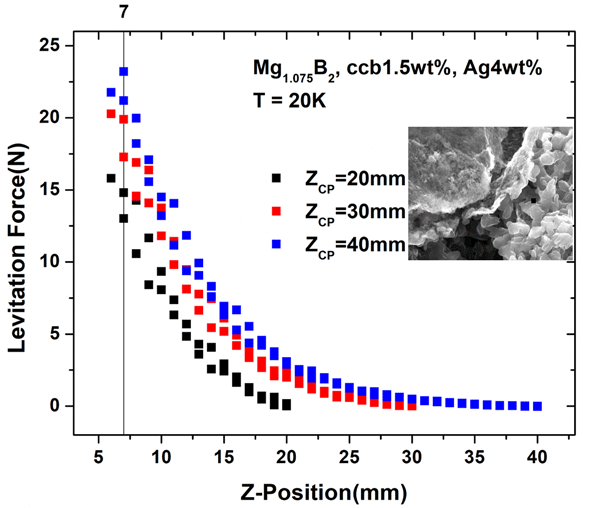WB5-10
Correlation between superconducting properties and microstructure in silver added MgB2 bulk
Dec.2 15:30-15:45 (Tokyo Time)
Graduate School of Science & Engineering, Shibaura Institute of Technology, Japan1
Normandie University, ENSICAEN, UNICAEN, CNRS, CRISMAT, France2
Institute of Physics ASCR, Czech Republic3
It is well known that a high critical current density (Jc) usually points out to a good superconducting performance or good trapped field properties. Hence, researchers have worked and are still intensively working on improving Jc in order to reach high trapped field superconducting magnets. Another property that can resemble the trapped field is levitation force (LF). The present work shows a correlation among Jc, LF, and microstructure of the bulk. Three MgB2 bulk specimens of around 20 mm diameter and 5-7 mm thickness were fabricated using i) amorphous boron, ii) amorphous boron + 4 wt% Ag, and iii) carbon encapsulated boron (1.5 wt%) + 4 wt% Ag. LF was measured on field-cooled samples 7 mm away from bulk via a 45 mm diameter cylindrical NdFeB permanent magnet located at a varying distance Zcp above the superconductor. LF of 11.9, 12.9, and 14.8 N was observed at Zcp = 20 mm for systems i, ii, and iii, respectively. On the other hand, Jc of 220, 300, and 340 kA/cm2 was observed in these systems, respectively. Scanning electron microscopy revealed special Ag-Mg layers and compounds formed in the silver-added samples, which acted as flux pinning centers. Flux pinning diagrams showed the peak position at 0.2, indicating the dominant pinning mechanism. All the superconducting properties correlated with microstructural studies.
Fig: Levitation force of Ag added, excess Mg and carbon encapsulated boron-based MgB2 bulk and its special microstructure
Keywords: Superconducting properties, microstructure, Silver addition, MgB2 bulk
